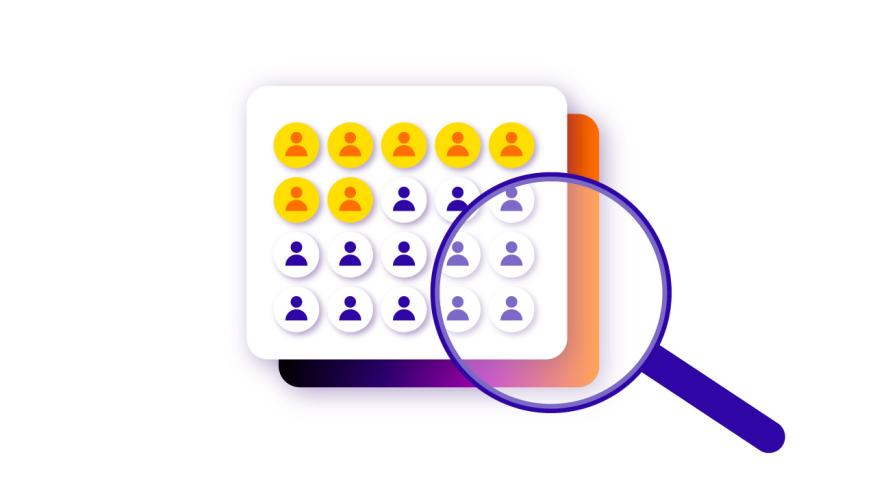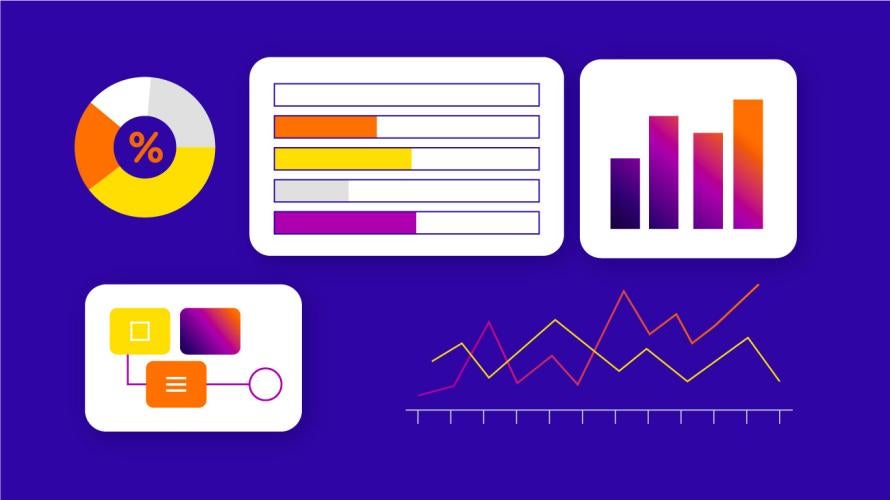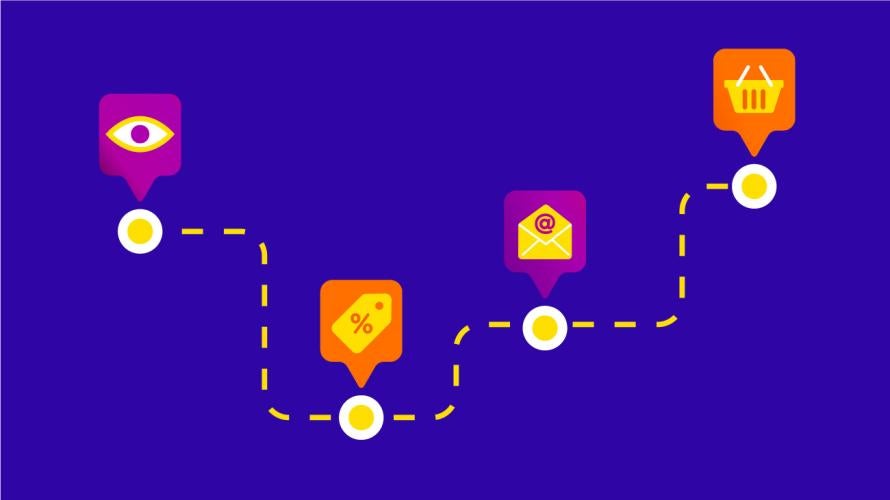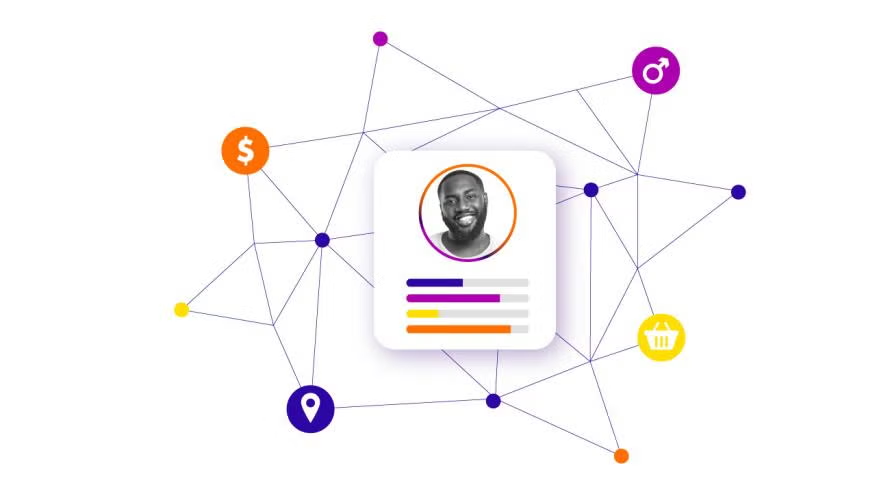Five-Step Guide to Creating a Personalized Customer Experience
With the rise of data technologies like Google Analytics in 2005, digital teams can efficiently measure the success of web pages to customize each visitor’s online journey.
As a result of these advancements, a staggering 73% of consumers now expect companies to understand their individual needs and expectations, with 56% anticipating that offers will always be personalized. These figures demonstrate the need for all businesses to execute personalization strategies well to increase conversions.
However, while many consumers expect personalization, they are also now far more concerned about data privacy. 86% of consumers are becoming increasingly wary about how their information is collected, stored and potentially shared. This fear underscores the importance of not just personalizing the customer experience but doing so with transparency and respect for consumer privacy.
In this article, we’ll guide you through crafting a personalized experience that meets and exceeds your customers' expectations, all while safeguarding their data with our five-step strategy.
How To Create a Personalized Customer Experience
Whether it's tailoring email marketing campaigns to individual user behavior or customizing the shopping experience on your website, the avenues for personalization are vast and varied.
But despite the diversity in approaches, a few essential steps are universally necessary to ensure that your personalization efforts are not only effective but also efficient and respectful of your customers' privacy:
1. Putting Together the Right Team
Image

A common pitfall in the realm of personalization is underestimating the effort and expertise required to execute a successful strategy. Personalization is not a one-person show; it necessitates a cross-functional team whose collaboration and expertise are instrumental to the campaign's success.
A comprehensive team should include members from:
- IT and Developers to handle the technical integrations and data management.
- Marketing to create compelling, personalized content that resonates with different audience segments.
- Customer service to provide insights from direct customer interactions and feedback.
- Data analytics to interpret customer data and identify personalization trends and opportunities.
2. Establishing Goals and Selecting Touchpoints
The next step is to define clear personalization goals and identify the touchpoints where personalization will have the most significant impact. Your goals might include increasing average spending, boosting conversion rates or reducing website bounce rates.
Mapping out your customer’s journey is essential to understand the various stages they go through when interacting with your brand. This map will help you identify critical touchpoints that offer opportunities for personalization, such as email communications, product recommendations on your website or personalized offers based on previous interactions.
For instance, if your goal is to increase conversions, focusing on personalizing the checkout process might be more beneficial than tailoring the homepage. Conversely, to decrease bounce rates, personalized content on the first page a visitor sees could be the key.
3. The Role of Customer Data in Personalization
Image

The collection and analysis of customer data enable businesses to gain a deeper understanding of their clientele, allowing for the creation of a more tailored and meaningful experience.
Some of the types of data to collect:
- Demographics: Age, location and gender.
- Behavioral: Browsing history and purchase behavior.
- Transactional: Purchase history and product preferences.
However, with the increasing concern over data privacy, it's essential to navigate the collection and use of customer data carefully. Adhering to regulations like the General Data Protection Regulation (GDPR) and California Consumer Privacy Act (CCPA) is not just about compliance; it's about earning and maintaining your customers' trust. A significant 52% of marketers recognize the need for their brands to improve content management and data privacy efforts.
Using the collected data for personalization can manifest in various ways. For example, a recipe website could use location data to display recipes that are more appealing to users based on regional tastes or seasonal ingredients available in their area. This kind of targeted personalization not only enhances the user experience but also increases the relevance of the content, making it more engaging and valuable to the user.
If you want to know more about elevating your data strategy and unlocking personalization for your customers, our webinar on this topic is the perfect opportunity for you.
4. Analyzing Data and Implementing Strategies
Image

Collecting and analyzing your data helps you gain insights into your customers’ wants, behavior and preferences. This step is necessary because it informs the strategies you will implement to engage with your customers on a more personal level.
Next, segment your customer base into personas based on their behavior and preferences to tailor your content, design, and marketing strategies effectively. For instance, if you're running an eCommerce platform, understanding the purchasing habits and preferences of different segments can help you customize product recommendations, deals and content to match their interests.
Whether it’s choosing the content for your next campaign or redesigning your website to improve user experience, every decision should be data-driven. Here’s how you can effectively use your collected data:
- Central data repository: Having a central repository for all your customer data ensures that everyone in your team can access and analyze the same data, leading to more cohesive and effective personalization strategies.
- Omnichannel personalization: Today’s consumers interact with brands across multiple platforms and devices, so reaching them on their preferred channel is essential. For example, if a customer has opted in for marketing emails, using their purchase history and browsing behavior to send them targeted offers can significantly increase engagement and conversion rates.
- The role of technology: Artificial Intelligence (AI) and Machine Learning (ML) algorithms can process vast amounts of data to identify patterns and predict customer behavior, making the implementation of personalization strategies more efficient and effective.
5. Measuring the Impact of Personalization Strategies
Image

Personalization is not a set-it-and-forget-it strategy. Its effectiveness needs to be continuously evaluated against your business goals. This involves monitoring key performance indicators (KPIs) and metrics that align with your objectives.
Whether it's retention rates, click-through rates, conversion rates, or customer satisfaction scores, each metric provides insights into how well your personalization efforts resonate with your audience.
From our work with Drift, their Head of Revenue Marketing, Caitlin Seele, had this to say:
“No matter what area of marketing you're in, you need to think about how you're creating compelling journeys on your website. Marketers should be more involved when it comes to things like landing page testing and design. Having a good relationship with your WebOps resource can help you understand how to take the web experience behind a campaign to the next level, and also how the speed of your site impacts user experience and conversions.”
A/B testing plays a critical role in this evaluation process. By comparing different personalization tactics, you can determine which ones have the desired impact on your audience and adjust your strategies accordingly. This iterative process ensures that your personalization efforts remain dynamic and responsive to changing customer preferences and behaviors.
Additionally, engaging with WebOps resources to understand and enhance the web experience can take your personalization strategies to the next level. Factors like landing page design, user experience, and site speed significantly impact conversion rates and customer satisfaction.
Personalization Examples by Industry
Personalization is a versatile and effective strategy that can be adapted to the unique needs and goals of different industries. Here are some industry-specific examples of how personalization can be leveraged to create more meaningful interactions:
Retail
In the retail sector, personalization can transform the shopping experience:
- Recommended products allow businesses to suggest items based on a customer's past purchases, browsing history and search queries. This can take the form of personalized product displays on websites, targeted email campaigns or customized ads on social media platforms.
- Email retargeting for abandoned carts reminds customers of items they've shown interest in but haven't yet purchased.
- Personalized email sign-up offers can incentivize new visitors to engage with the brand, offering them deals that match their interests.
Travel
The travel industry can greatly benefit from personalization by recommending destinations and accommodations that align with a customer's budget, preferences and travel history.
For instance, if a customer frequently books beach vacations, suggesting coastal destinations along with special deals on beachfront hotels can spark their interest. Equally if the business knows they have just been on a beach vacation, suggesting a different style of holiday – for example a city break – may be more appropriate. Tailoring content and offers based on seasonality, past booking behavior and preferences can significantly enhance the booking experience, making customers feel understood and valued.
Education
Education platforms can personalize learning experiences by suggesting courses, resources and study materials based on a learner’s interests, performance and goals.
Healthcare
Personalization can improve patient care and engagement by providing tailored health recommendations, appointment reminders and information on relevant health services based on individual health histories and preferences.
Finance
Financial institutions can use personalization to recommend products and services that align with customers' demographics, income levels and risk tolerance. For example, younger customers might be interested in high-yield savings accounts or investment apps, while older customers might appreciate information on retirement planning services.
Entertainment
Streaming services can use personalization to recommend movies, TV shows and music based on a user's viewing and listening history, enhancing the user experience.
Automotive
In the automotive industry, personalization can be used to recommend vehicles that match a customer's demographics, preferences and needs. For example, families might be shown SUVs with high safety ratings, while individuals interested in performance might receive information on sports cars.
Take the Next Step in Personalization With Pantheon
Image

Personalization, when done correctly, can transform the customer experience across a wide range of industries. By leveraging data to understand and anticipate customer needs, businesses can create more engaging, relevant and effective interactions that drive satisfaction, loyalty and growth.
However, the success of personalization strategies hinges on a clear, organized approach that respects customer privacy and preferences. One of the common challenges businesses face when implementing personalization is the impact on website performance. The sophisticated software required for deep personalization can, unfortunately, slow down your site, negatively affecting user experience and potentially undermining the very goals you set out to achieve.
Recognized as the fastest hosting platform for Drupal and WordPress, our Pantheon WebOps platform is designed to supercharge your website's performance while enabling the sophisticated personalization strategies your business needs to stand out. But what truly sets Pantheon apart is our Edge Integrations.
Edge Integrations offer the solution to the common problem of personalization-related slowdowns. With processing at the edge of the network, closer to your users, we ensure that your personalization efforts enhance rather than hinder your site's performance. This means you can implement even the most complex personalization strategies without worrying about impacting speed or website performance.
Don't let slow site performance hold back your personalization efforts. Contact us at Pantheon today and take the first step towards offering your customers the best personalization journey possible!